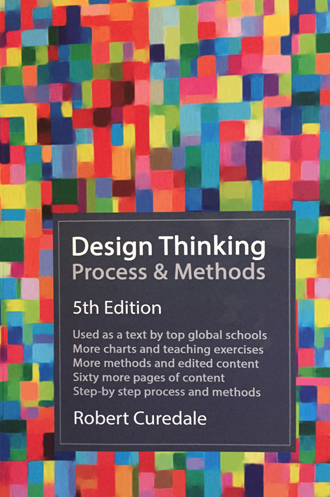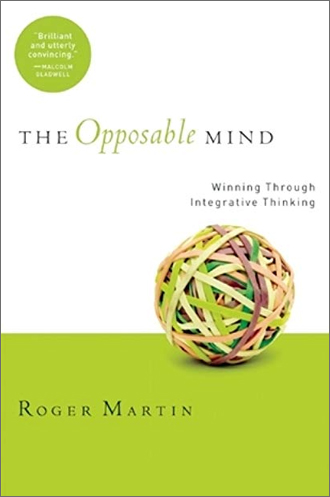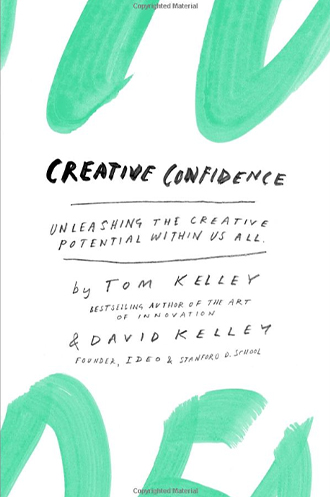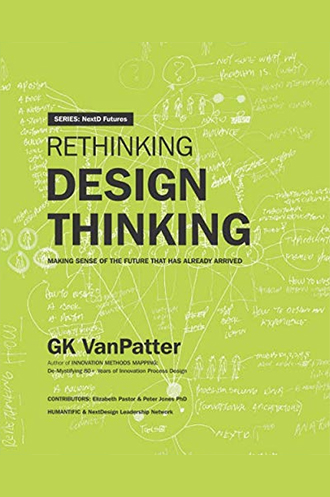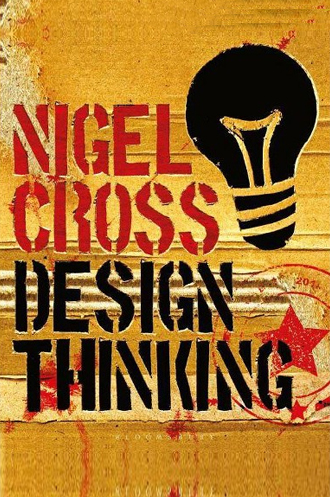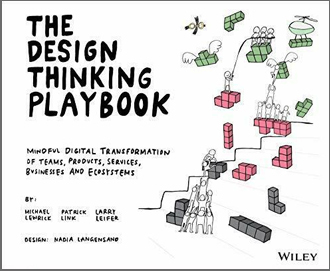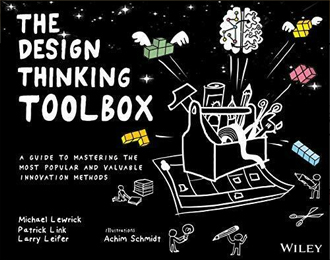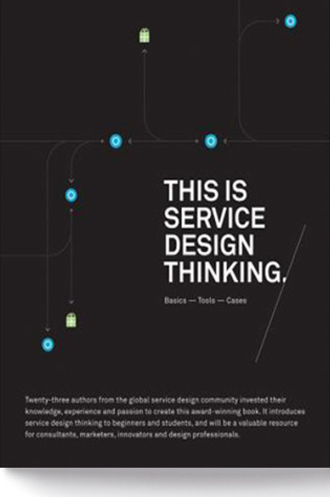
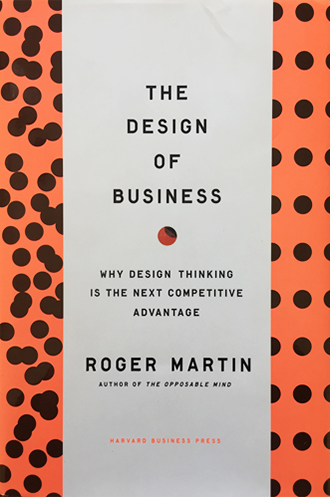
The Design of Business
Why Design Thinking is The Next Competitive Advantage.
Roger L. Martin,
The Rotman School of Management
The University of Toronto
"Most companies today have innovation envy. They yearn to come up with a game—changing innovation like Apple's iPod, or create an entirely new category like Facebook. Many make genuine efforts to be innovative—they spend on R&D, bring in creative designers, hire innovation consultants. But they get disappointing results.
Why? In The Design of Business, Roger Martin offers a compelling and provocative answer: we rely far too exclusively on analytical thinking, which merely refines current knowledge, producing small improvements to the status quo." Buy on Amazon
Designing for Growth.
A Design Thinking Tool Kit for Managers.
Jeanne Liedtka and Tim Ogilvie educate readers in one of the hottest trends in business: "design thinking," or the ability to turn abstract ideas into practical applications for maximal business growth. Liedtka and Ogilvie cover the mind-set, techniques, and vocabulary of design thinking, unpack the mysterious connection between design and growth, and teach managers in a straightforward way how to exploit design's exciting potential.
Exemplified by Apple and the success of its elegant products and cultivated by high-profile design firms such as IDEO, design thinking unlocks creative right-brain capabilities to solve a range of problems. This approach has become a necessary component of successful business practice, helping managers turn abstract concepts into everyday tools that grow business while minimizing risk.
The Designing for Growth Field Book.
A Step-by-Step Project Guide
Designing for Growth: A Design Thinking Tool Kit for Managers (D4G) showed how organizations can use design thinking to boost innovation and drive growth.
This updated and expanded companion guide is a stand-alone project workbook that provides a step-by-step framework for applying the D4G tool kit and process to a particular project, systematically explaining how to address the four key questions of the design thinking approach.
Design Thinking Process and Methods.
5th Edition.
Robert Curedale has compiled a compendium of 660 pages as a reference book for Design Thinking.
Whether you are a student starting out in Design Thinking or a seasoned professional looking for new processes, tools and methods for a particular project or type of problem, this is the book for you.
Think about it as the way to expand your Design Thinking vocabulary and ways of tackling problems.
This is the ultimate guide to design thinking tools. Hence the 660 pages. You will find tools to help you in any circumstances along with guidance on when to use each one.
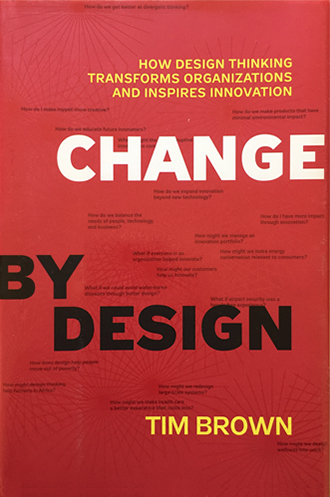
Change by Design
How Design Thinking Transforms Organizations and Inspires Innovation
The myth of innovation is that brilliant ideas leap fully formed from the minds of geniuses. The reality is that most innovations come from a process of rigorous examination through which great ideas are identified and developed before being realized as new offerings and capabilities.
This book introduces the idea of design thinking‚ the collaborative process by which the designer′s sensibilities and methods are employed to match people′s needs not only with what is technically feasible and a viable business strategy. In short‚ design thinking converts need into demand. It′s a human−centered approach to problem solving that helps people and organizations become more innovative and more creative.
Design thinking is not just applicable to so−called creative industries or people who work in the design field. It′s a methodology that has been used by organizations such as Kaiser Permanente to increase the quality of patient care by re−examining the ways that their nurses manage shift change‚ or Kraft to rethink supply chain management. This is not a book by designers for designers; this is a book for creative leaders seeking to infuse design thinking into every level of an organization‚ product‚ or service to drive new alternatives for business and society.
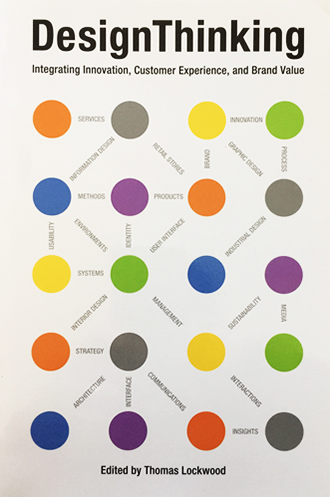
Design Thinking
Integrating Innovation, Customer Experience, and Brand Value
Thomas Lockwood
Design Thinking confirms that design, as a process and as an output, has greater opportunity to add value to the triple bottom line than any other business function. Ranked in the top 100 best seller list by Amazon in design, marketing, and communication book categories, Design Thinking explores point-of-views, techniques, methods, and hands-on case studies from international thought leaders. It covers design thinking methods; design thinking in service design; design thinking in brand building; and design thinking in creating customer experiences. The book includes insights by Thomas Lockwood along with 24 contributing authors.
The Opposable Mind
How Successful Leaders Win Through Integrative Thinking.
In this primer on the problem-solving power of “integrative thinking,” Martin draws on more than 50 management success stories, including the masterminds behind The Four Seasons, Proctor & Gamble and eBay, to demonstrate how, like the opposable thumb, the “opposable mind”-Martin’s term for the human brain’s ability “to hold two conflicting ideas in constructive tension”-is an intellectually advantageous evolutionary leap through which decision-makers can synthesize “new and superior ideas.” Using this strategy, Martin focuses on what leaders think, rather than what they do.
Among anecdotes and examples steering readers to change their thinking about thinking, Martin gives readers specific strategies for understanding their own “personal knowledge system” (by parsing inherent qualities of “stance,” “tools” and “experience”), as well as for taking advantage of the “richest source of new insight into a problem,” the “opposing model.”
Each of the eight chapters is well organized, making for a clear and cumulative read. Part inspiration, part logic lesson, this title will provide fresh perspective for anyone prepared to dust off her thinking cap.
Creative Confidence
Unleashing the Creative Potential Within Us All
Too often, companies and individuals assume that creativity and innovation are the domain of the "creative types." But two of the leading experts in innovation, design, and creativity on the planet show us that each and every one of us is creative.
In an incredibly entertaining and inspiring narrative that draws on countless stories from their work at IDEO, the Stanford d.school, and with many of the world's top companies, David and Tom Kelley identify the principles and strategies that will allow us to tap into our creative potential in our work lives, and in our personal lives, and allow us to innovate in terms of how we approach and solve problems.
It is a book that will help each of us be more productive and successful in our lives and in our careers.
Rethinking Design Thinking
Making Sense of the Future That has Already Arrived
Part expose, part history lesson and part provocation, ReThinking Design Thinking extends Humantific’s significant body of sensemaking work addressing innovation, design and changemaking. Connecting the dots between theory and practice, philosophy and methodology, this book shares our perspective on how Humantific makes sense of the already-arriving future of design / design thinking.
With vast confusion around the subject of design thinking in the marketplace, this book jumps in with a combination of thought-provoking conversational text and explanation diagrams. Stepping outside the pervasive industry marketing narrative, ReThinking Design Thinking points out the need for a new form of readiness to better take on the scale and complexity of organizational and societal challenges now emerging. This book clearly makes the case for more robust and adaptive methods beyond the assumptions of product, service and experience creation. The good news is that this book also points out that a next generation, emerging practice community is already hard at work reinventing design thinking / doing for complex situations. If you are ready for acknowledging significant change challenges facing design / design thinking as methodology and interested in more clearly defined paths forward, ReThinking Design Thinking is for you.
Nigel Cross Design Thinking
Understanding How Designers Think and Work
Design thinking is the core creative process for any designer; this book explores and explains this apparently mysterious "design ability".
Focusing on what designers do when they design, Design Thinking is structured around a series of in-depth case studies of outstanding and expert designers at work, interwoven with overviews and analyses. The range covered reflects the breadth of Design, from hardware to software product design, from architecture to Formula One design.
The book offers new insights and understanding of design thinking, based on evidence from observation and investigation of design practice.
Design Thinking is the distillation of the work of one of Design's most influential thinkers. Nigel Cross goes to the heart of what it means to think and work as a designer. The book is an ideal guide for anyone who wants to be a designer or to know how good designers work in the field of contemporary Design.
Design Thinking for the Greater Good
Faced with particularly wicked problems, social sector organizations are searching for powerful new methods to understand and address them. Design Thinking for the Greater Good goes in depth on both the how of using new tools and the why.
Convivial Toolbox: Generative Research for the Front End of Design
Generative design research is an approach to bring the people we serve through design directly into the design process in order to ensure that we can meet their needs and dreams for the future.
The book introduces an emerging domain of design that is of immense interest today not only to the academic design research community but also to those in the business community charged with the development of human-centered products, systems, services, and environments.
The Design Thinking Playbook
A radical shift in perspective to transform your organization to become more innovative
The Design Thinking Playbook is an actionable guide to the future of business. By stepping back and questioning the current mindset, the faults of the status quo stand out in stark relief―and this guide gives you the tools and frameworks you need to kick off a digital transformation. Design Thinking is about approaching things differently with a strong user orientation and fast iterations with multidisciplinary teams to solve wicked problems. It is equally applicable to (re-)design products, services, processes, business models, and ecosystems. It inspires radical innovation as a matter of course, and ignites capabilities beyond mere potential. Unmatched as a source of competitive advantage, Design Thinking is the driving force behind those who will lead industries through transformations and evolutions.
This book describes how Design Thinking is applied across a variety of industries, enriched with other proven approaches as well as the necessary tools, and the knowledge to use them effectively. Packed with solutions for common challenges including digital transformation, this practical, highly visual discussion shows you how Design Thinking fits into agile methods within management, innovation, and startups.
The Design Thinking Toolbox
A practical guide to make innovation happen
The Design Thinking Toolbox explains the most important tools and methods to put Design Thinking into action. Based on the largest international survey on the use of design thinking, the most popular methods are described in four pages each by an expert from the global Design Thinking community. If you are involved in innovation, leadership, or design, these are tools you need. Simple instructions, expert tips, templates, and images help you implement each tool or method.
- Quickly and comprehensively familiarize yourself with the best design thinking tools
- Select the appropriate warm-ups, tools, and methods
- Explore new avenues of thinking
- Plan the agenda for different design thinking workshops
- Get practical application tips
The Design Thinking Toolbox help innovators master the early stages of the innovation process. It's the perfect complement to the international bestseller The Design Thinking Playbook.
Mapping Experiences
Customers who have inconsistent, broken experiences with products and services are understandably frustrated. But it s worse when people inside these companies can t pinpoint the problem because they re too focused on business processes.
This practical book shows your company how to use alignment diagrams to turn valuable customer observations into actionable insight. With this unique tool, you can visually map your existing customer experience and envision future solutions. Product and brand managers, marketing specialists, and business owners will learn how experience diagramming can help determine where business goals and customer perspectives intersect. Once you are armed with this data, you can provide users with real value.
Mapping Experiences is divided into three parts:
- Understand the underlying principles of diagramming
- Discover how these diagrams can inform strategy.
- Learn how to create diagrams with the four iterative modes in the mapping process
See key diagrams in action, including service blueprints, customer journey maps, experience maps, mental models, and spatial maps and ecosystem models.
This is Service Design Thinking
How to design and market services to create outstanding customer experiences
Service design thinking is the designing and marketing of services that improve the customer experience, and the interactions between the service providers and the customers. If you have two coffee shops right next to each other, and each sell the exact same coffee at the exact same price, service design is what makes you walk into one and not the other. Maybe one plays music and the other doesn't. Maybe one takes credit cards and the other is cash only. Maybe you like the layout of one over the other, or one has more comfortable seating. Maybe the staff at one is friendlier, or draws fun shapes on the top of their lattes. All of these nuances relate to service design.
This Is Service Design Thinking combines the knowledge of twenty-three international authors and even more online contributors from the global service design community and is divided into three sections:
- Basics: outlines service design thinking along five basic principles
- Tools: describing a variety of tools and methods used in Service Design Thinking
- Cases: vivid examples for the introduced fundamentals with real-life case studies from 5 companies that did inspiring projects within the field of Service Design

